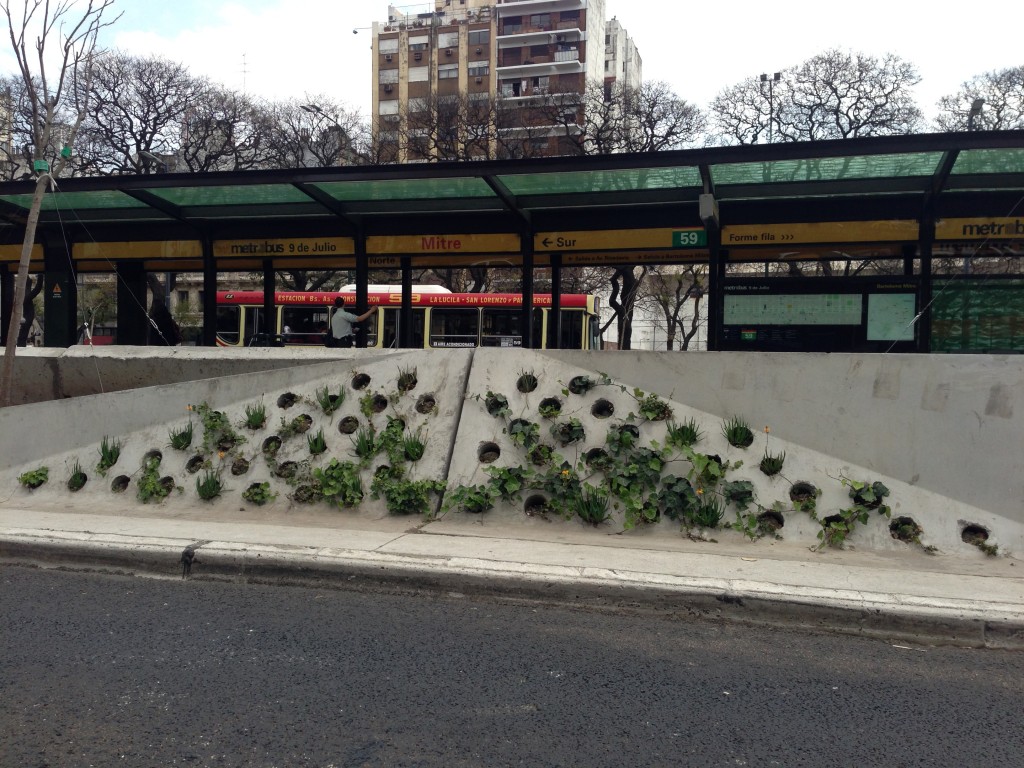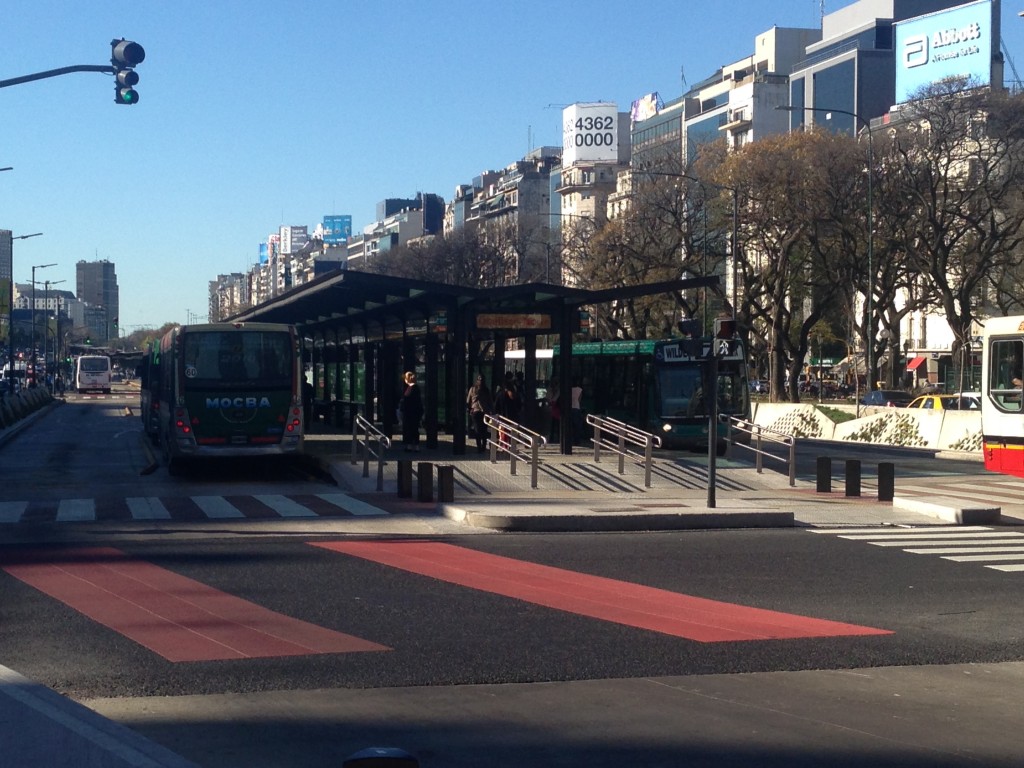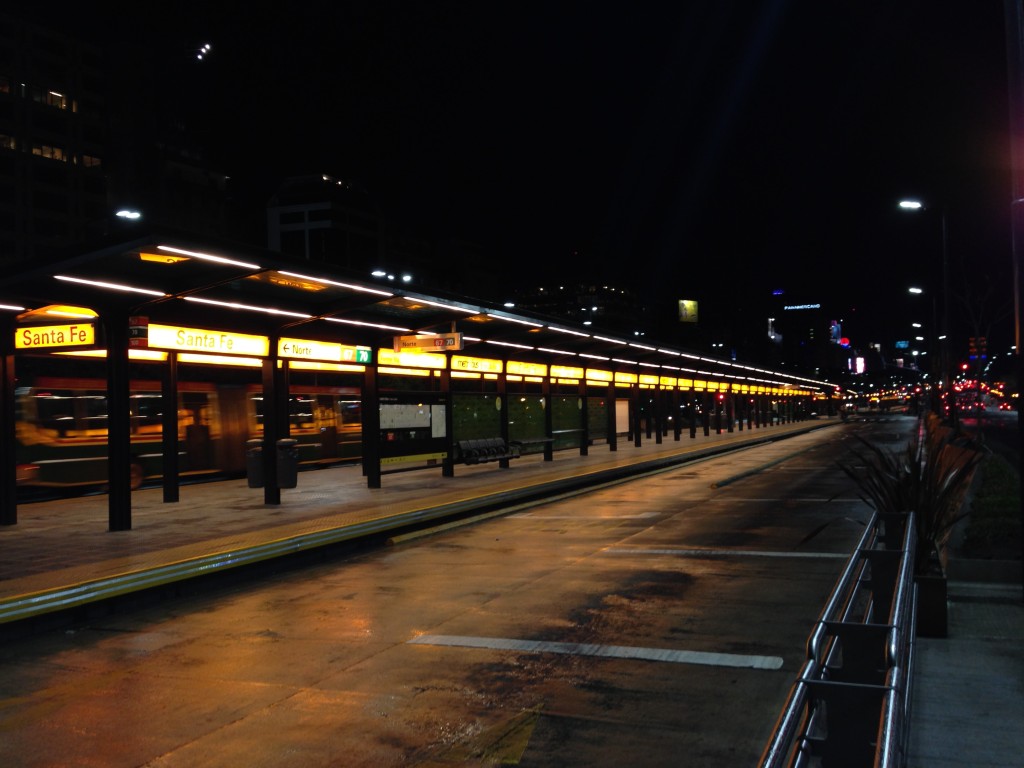New Busway in Buenos Aires
A new dedicated busway along “the widest street in the world” has reduced friction between buses and cars, but created some new friction between preservationists and government officials in Buenos Aires.
I just returned from my honeymoon in Buenos Aires. One of the first things I noticed while exploring the downtown “micro center” was a four-lane contraflow busway along Av 9 de Julio, often referred to as the widest street in the world.
Av 9 de Julio is literally a block wide — check out this jaw-dropping photo — with 7 traffic lanes in each direction in the main roadway and an additional 2 lanes of access road, also in each direction. Up until recently, buses traveled in the access lanes, conflicting with cars and pedestrians. A new four-lane busway facility was recently constructed along the center of this massive avenue. The facility is well lit, attractive and fast: the bus travel time down the three-kilometer roadway is expected to drop from 60 minutes to 20.
What was the controversy? It appears many people were concerned about the removal of street trees for the new transit facility, though through replanting efforts, there was a net gain of 414 trees. An additional concern was over the disruption of the corridor’s physiognomy, changing the face of such an iconic thoroughfare. The project even caught the attention the New York Times, in which an opinion writer called the busway “ill-conceived” and “fundamentally misguided and a poor use of resources.”
From my perspective, it is a step in the right direction. The busway provides priority for Buenos Aires’ heavily used “colectivos”, increasing speeds and reducing travel time. Increases in speed translates directly to reduced fuel use and therefore reduced emissions. Despite the city’s name, the air quality in Buenos Aires needs all the help it can get. The city subway, Subte, is completely packed during rush hours. The most cost-effective way to move more people is by dedicating right-of-way on the surface.
The contraflow nature of the busway serves multiple purposes: First, since regular buses are used with doors on the right side, it allows for shared center platforms instead of side platforms. Secondly, at intersections the general purpose lanes have left-turn restrictions. The busway lanes are in the path of a potential left turn, and the buses cruising through the intersection act as a visual reminder not to turn.
The facility has only recently opened so more time is needed before an assessment of the benefits can be assembled. I have faith that this facility will be a shining example for providing priority to buses in congested downtown areas across South America and the world.

Concrete barrier separation is enhanced with small pockets to allow for plants to grow, increasing attractiveness and possibly air quality.




Recent Comments